What about us? 9 endangered and threatened wildlife species in Trump-targeted monuments
President Trump is effectively eliminating Utah's Bears Ears National Monument and drastically reducing Grand Staircase-Escalante National Monument. Next up could be similar reductions for Nevada's Gold Butte National Monument and Oregon's Cascade-Siskiyou National Monument, along with potentially damaging management changes for several other monument lands.
All told, the Trump administration has executed the single biggest attack on public lands in American history, and in fittingly dramatic fashion. Sweeping vistas have been virtually carved up for drilling and development, imperiling some of the most beautiful places in the country.
But this is about much more than just the picture-perfect scenery. The Antiquities Act of 1906 grants presidents the authority to designate national monuments on federally owned land that contains “objects of historic or scientific interest.” These designations have frequently been used to protect the habitats of animal and plant species listed under the Endangered Species Act (ESA). So Trump hasn't merely proposed redrawing boundaries for inanimate landscapes; he has put into motion a series of actions that threaten the very existence of sensitive wildlife.
This list represents just a tiny fraction of the creatures at stake as a result of Trump's actions. Each species here is federally listed under the ESA, and each can claim a home in the monument lands the Trump administration has targeted for protection rollbacks or punitive management changes.
California condor – Bears Ears National Monument (Utah)
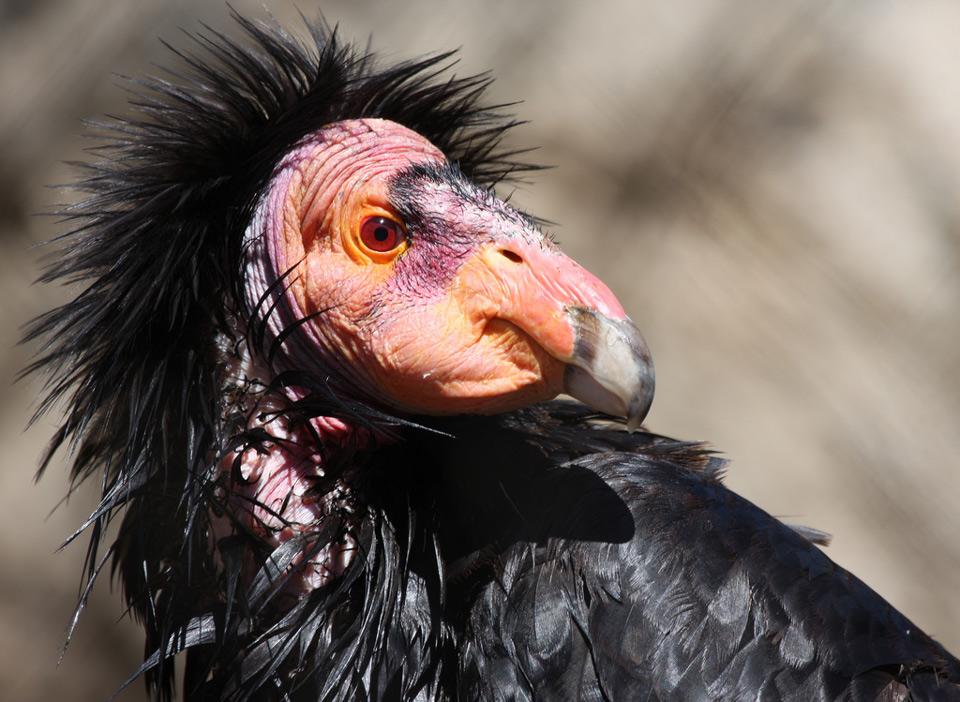
Nathan Rupert, flickr.
A huge, regal bird whose name is almost synonymous with back-from-the-brink conservation success stories, the California condor is nonetheless still considered endangered, just as it has been for over 50 years. Among the estimated few hundred birds left in the wild, some are thought to reside in Bears Ears National Monument, which has been effectively eliminated by President Trump. National monument lands, wildlife refuges and other protected places are especially important for the birds' survival, as condors tend to do better in areas with limited human interference and less development. Cuts to these public lands can have dire consequences.
Bald-headed and jowly, these scavengers are not conventionally beautiful, but their presence bespeaks a dinosaur-like mystique, and any birdwatcher would be extremely fortunate to see one in the flesh. Allowing reckless intrusion and even development in or around areas they call home would be a true crime against conservation.
Southwestern willow flycatcher – Grand Staircase-Escalante National Monument (Utah)
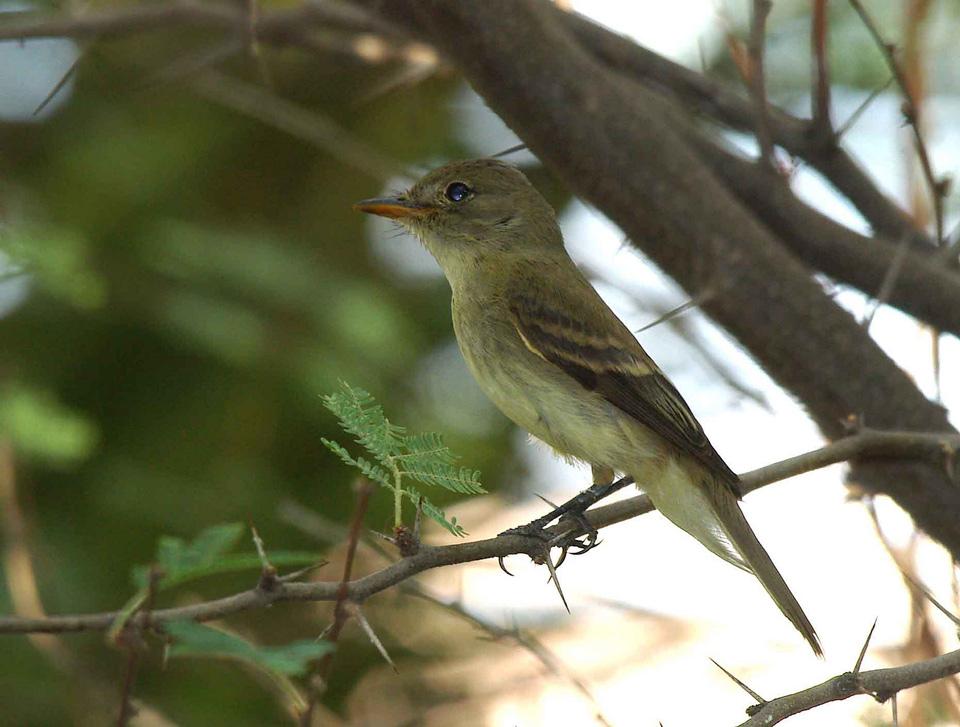
USFWS via USDA, flickr.
Endangered for more than two decades, the southwestern willow flycatcher is a fleet little insectivore whose trademark song—often described as "sneezy"--can be heard in some riparian landscapes through the Southwest, including around the Grand Staircase-Escalante National Monument's Escalante River. Though populations rebounded in the early to mid 2000s, the bird is still at risk due to habitat loss, declining cottonwood and willow trees and damage done to the flycatcher's preferred nesting shrubs by invasive beetles.
Government agencies have worked to limit the effects of these threats. President Trump recently cut huge parts of Grand Staircase-Escalante National Monument, which could leave important habitat open to development and damage populations beyond repair. Attempts to introduce destructive coal mining operations to Grand Staircase-Escalante are a major concern as well.
Canada lynx – Katahdin Woods and Waters National Monument (Maine)
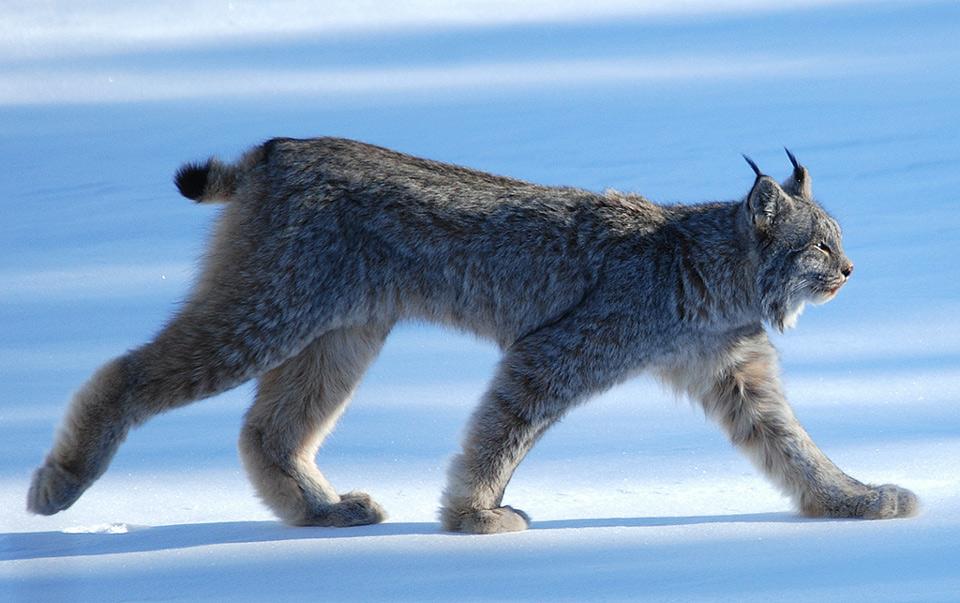
Keith Williams, flickr.
Among the fascinating animals that populate Katahdin Woods and Waters National Monument, the Canadia lynx is an especially elusive and striking sight. Listed as threatened since the year 2000, the tufted-eared, furry-jowled creature is a skilled hunter of a variety of small animals, notably the snowshoe hare.
Unfortunately, poor forest management practices have resulted in fragmentation of the spruce-fir forests and rolling terrain the cat needs, as well as the dense understory vegetation favored by its prey. Road-building, development and an increase in the severity of wildfires brought on by climate change have altered habitat as well. Once found as far south as Nevada and in every state along our northern border, the Canada lynx has dwindled to fewer than 2,000 in the contiguous U.S.
Most current lynx habitat is on public lands, but in the Northeast, private timber lands make up a key part of its home range. Katahdin Woods and Waters National Monument was converted from private timber land after purchase by a philanthropist in 2012, extending the protection afforded by Baxter State Park and other state lands. As President Obama noted in his 2016 proclamation, this gives the Canada Lynx a large expanse of natural land insulated from many threats.
Interior Secretary Ryan Zinke has proposed management changes to Katahdin Woods and Waters, but it is unclear what, specifically, they will entail. It is thought that more snowmobile access could be opened in the monument, which may draw coyotes to lynx habitat and create competition for prey.
Rio Grande cutthroat trout – Rio Grande del Norte National Monument (New Mexico)
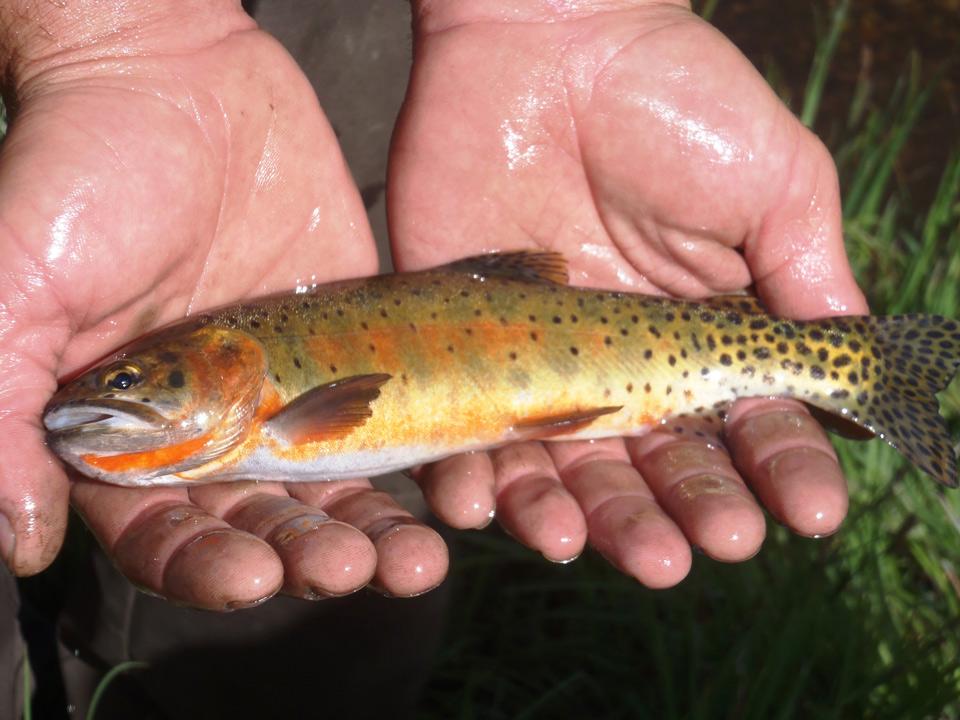
Chris Kitcheyan (USFWS), flickr.
The Rio Grande cutthroat trout may be seen as something of a conservation success story. In 2014, it was officially removed from endangered species list candidacy by the U.S. Fish and Wildlife Service after several years of aggressive work by state agencies to restore its numbers. However, some conservation groups have sued to challenge this decision, and the species still occupies just a sliver of its historic habitat in the American West due to development, competition from non-native species and other factors. Only a few populations are considered to be secure from these threats.
Rio Grande del Norte National Monument's "monument plan," which lays out management guidelines for the area, lists habitat for Rio Grande cutthroat trout as a "key component" of what the monument was established to protect. Indeed, locals and visitors consider these brilliant fish a major draw in the monument. Monument status helps preserve both the fish and a way of life for the people who seek them. Secretary Zinke has recommended management changes to Rio Grande del Norte National Monument, but it is not evident what that will mean on the ground--or in the water.
Mojave desert tortoise – Gold Butte National Monument (Nevada)
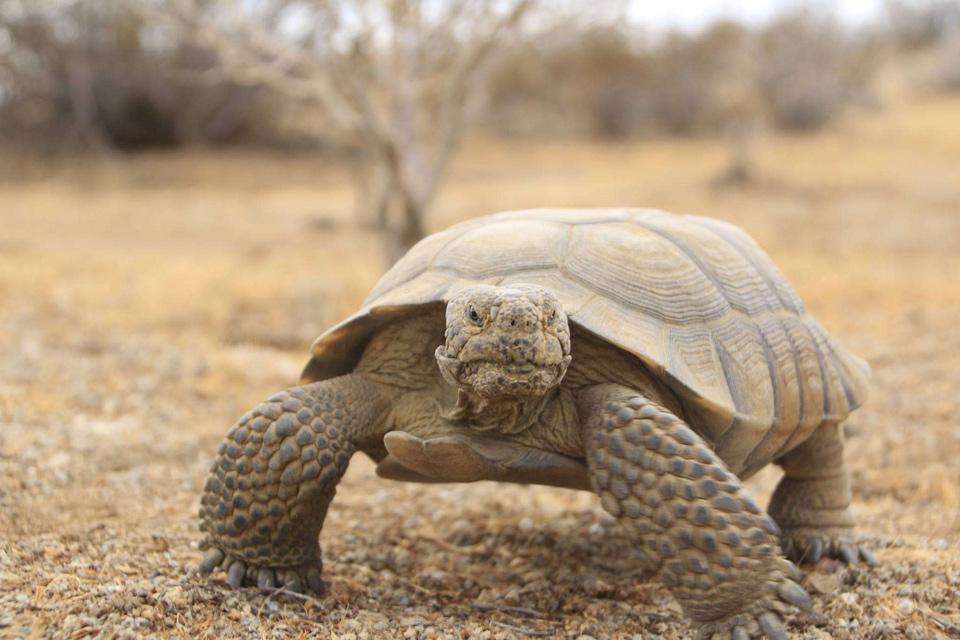
Dana Wilson (BLM), flickr.
Unlike its southern cousin in the Sonoran Desert, the Mojave desert tortoise has suffered debilitating losses and has been listed as threatened since 1980. Factors in this loss include livestock grazing, which harms plants and soil, leading to compaction and erosion that further degrades the habitat. Furthermore, with the encroachment of urban areas, more coyotes, ravens and domestic animals are being introduced to the area, increasing predation and exposure to disease.
Gold Butte National Monument sits at the western edge of the Mojave Desert in Nevada. The west and south boundaries are marked by Lake Mead and the Colorado River, and other than a small network of dirt roads, the area is largely untouched by the encroachment of modern humans. Mojave desert tortoises--“slow-footed symbols of the American Southwest,” as President Obama put it in his 2016 monument proclamation--are free to roam the desert expanse among thousands of years’ worth of Native American history. Secretary Zinke has recommended President Trump shrink Gold Butte, and it is unclear where the new boundaries would lie--or whether the reduced protections would leave the desert tortoise suddenly vulnerable.
Hawaiian monk seal - Pacific Remote Islands Marine National Monument (Pacific Ocean)
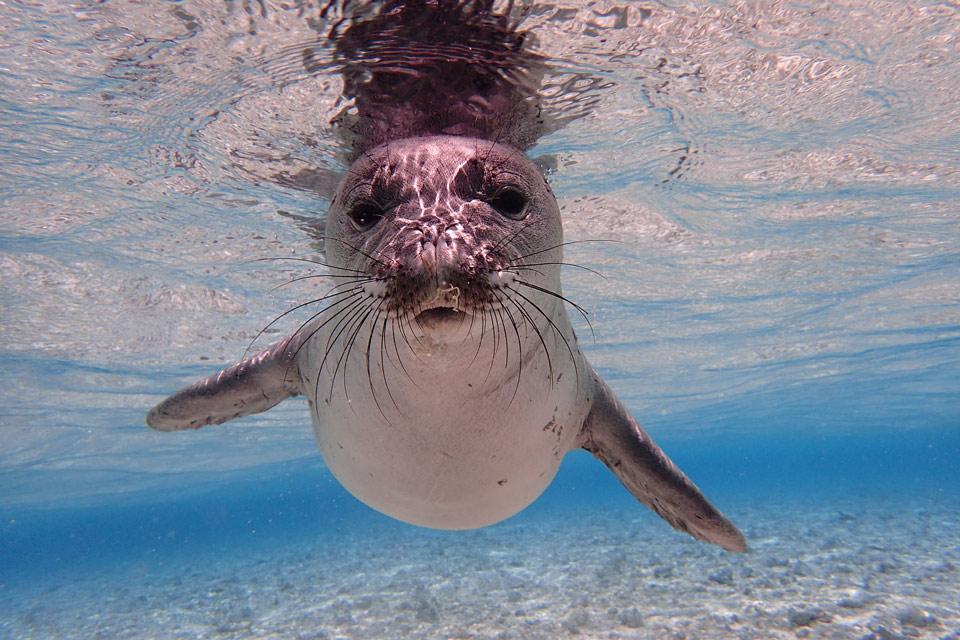
NOAA/PIFSC/HMSRP, flickr
Found on several atolls within the Pacific Remote Islands Marine National Monument, the beloved, besieged Hawaiian monk seal can grow to 450 pounds and has jaws suited to cracking crab shells with ease. However, it remains utterly at the whim of habitat loss and indiscriminate fishing operations, which have helped make it one of the most threatened marine mammals in the world--and put it on the endangered species list for over 40 years.
Found only in U.S. waters, the big predator is referred to as Ilio holo I ka uaua, or “the dog that runs in the rough water,” by native Hawaiians. Without a doubt, that vaguely canine appearance has helped buoy its public standing as a loveable beach-dweller. But that popularity won't help it if places where it can take refuge fall prey to radical anti-public lands and waters policies. The Trump administration is likely to make management changes to Pacific Remote Islands Marine National Monument, which will probably include moves to prioritize fishing over other uses (like conservation).
Green sea turtle – Rose Atoll Marine National Monument (Pacific Ocean)
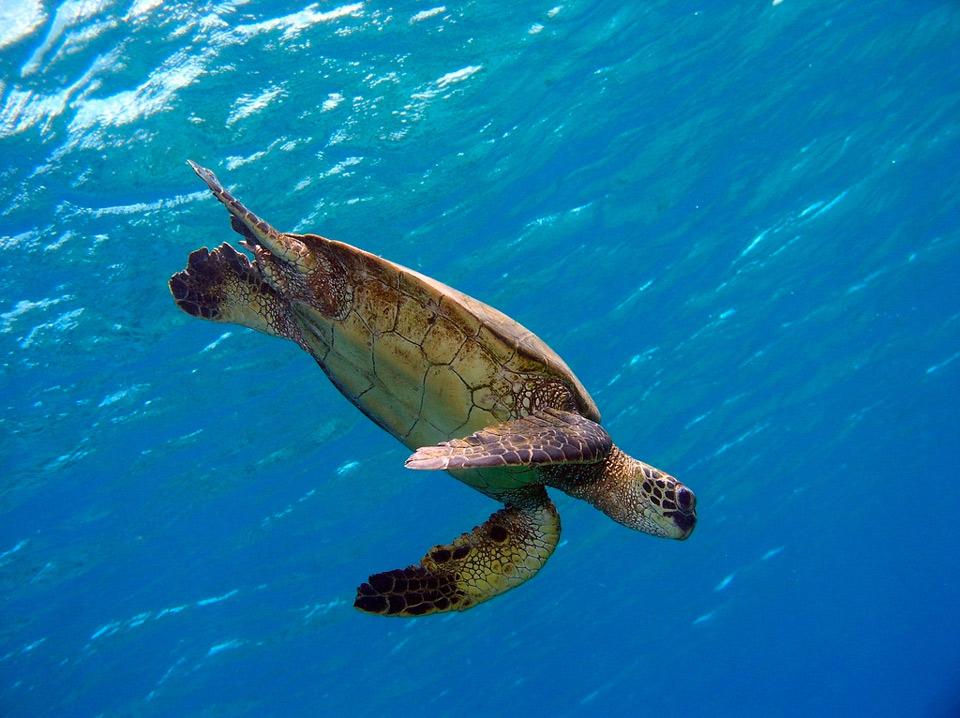
Peter Liu Photography, flickr
The Rose Atoll Marine National Monument contains nesting sites for both endangered hawksbill turtles and threatened green turtles, the largest of all hard-shelled sea turtles at up to a few hundred pounds. The latter are placid herbivores that can live up to 80 years in the wild if left undisturbed, but populations have declined dramatically in many areas due to hunting, egg harvesting, habitat loss and other threats.
While they have been sighted as far north as the waters off southern Alaska, green turtles generally stick to tropical and subtropical climes and need open sea, safe beaches for nesting and shallow lagoon-like areas or reefs for feeding. Rose Atoll is one of the few remaining spots in the Central Pacific that lets green turtles thrive. President George W. Bush's use of the Antiquities Act to give the area monument status was a vital step to bolstering the species' prospects. Now that the Trump administration is likely to change management practices at Rose Atoll, green turtle habitat may be made more vulnerable to fishing or other activities.
Aplomado falcon – Organ Mountains-Desert Peaks National Monument (New Mexico)
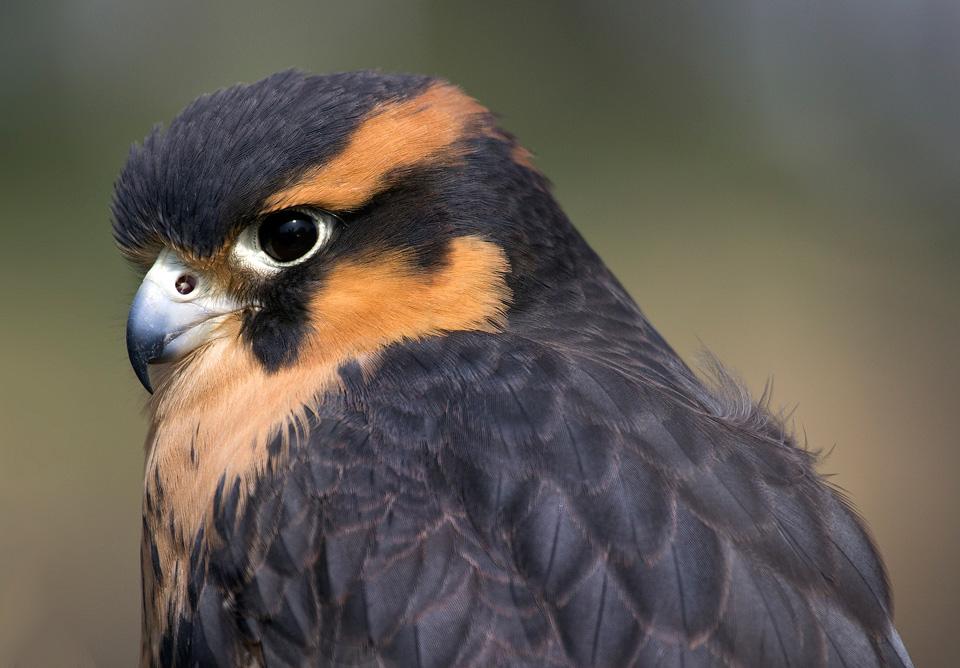
C Watts, flickr
Distinguished from its better known and more common cousin, the peregrine falcon, by its smaller size and light-colored head and breast markings, the aplomado falcon has been listed as endangered in the U.S. since 1986 but considered a rare sight north of Mexico since at least the 1920s. Among factors thought to have led to the species' sweeping decline were ongoing development and a campaign to poison prairie dogs in the first few decades of the 20th century.
In recent years, reintroduction efforts have led to a slight but promising uptick in the falcons' numbers in Texas and southern New Mexico. Grassland within Organ Mountains-Desert Peaks' kaleidoscope of landscape types provides habitat suited for the aplomado falcon and other rare birds (President Obama's 2014 proclamation that established the monument evoked the feisty raptors 'soaring' overhead). Organ Mountains-Desert Peaks National Monument is now slated for management changes, assuming President Trump follows Secretary Zinke's recommendations, which will likely allow more reckless human intrusion--and perhaps imperil a species that is just now getting up off the mat after almost a century of steep decline in America.
Western pond turtle – Cascade-Siskiyou National Monument (Oregon)
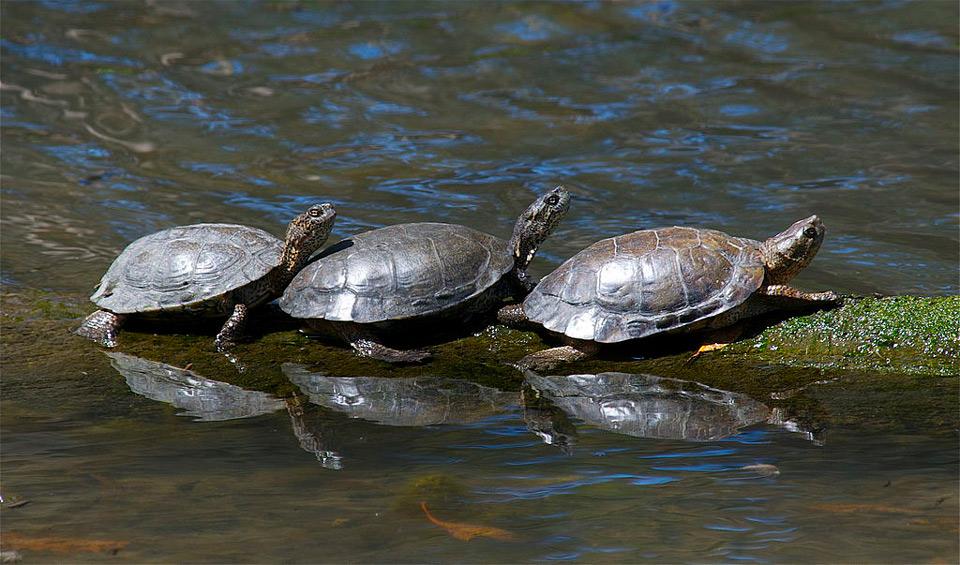
Jerry Kirkhart via Wikimedia Commons
On large swaths of the West Coast, this is the only native freshwater turtle species you can find. Unsurprisingly, the western pond turtle is currently "under review" by the Fish and Wildlife Service, which conceded in response to a petition signed by several conservation groups that the reptile may need endangered list protection (Oregon, Washington and California each afford it special state status as a sensitive or potentially imperiled species, and the International Union for Conservation of Nature already classifies it as "vulnerable").
This small, marble-patterned turtle prefers habitat near water that includes areas for basking in the sun. Such areas have been threatened by dam-building and other development, and western pond turtle populations in the Northwest have been in trouble for decades. Biodiverse landscapes like Cascade-Siskiyou National Monument—which has previously been confirmed to contain a population of western pond turtles--are especially important for the species, and indeed, it was specifically mentioned by President Obama in remarks on the monument's expansion in 2017. Unfortunately, Secretary Zinke has recommended unspecified cuts to Cascade-Siskiyou, presumably to increase access to the area for timber harvesting and motor vehicles. That could mean crucial habitat suddenly gutted, and wildlife like the western pond turtle imperiled.
